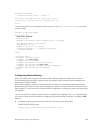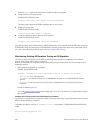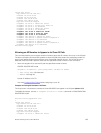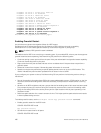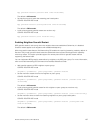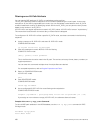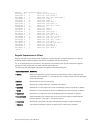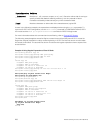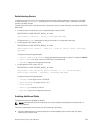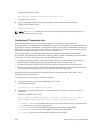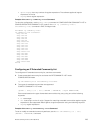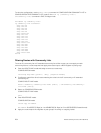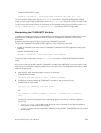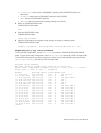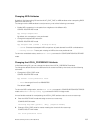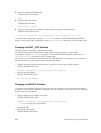
Redistributing Routes
In addition to filtering routes, you can add routes from other routing instances or protocols to the BGP
process. With the redistribute command, you can include ISIS, OSPF, static, or directly connected
routes in the BGP process.
To add routes from other routing instances or protocols, use any of the following commands in ROUTER
BGP mode.
• Include, directly connected or user-configured (static) routes in BGP.
ROUTER BGP or CONF-ROUTER_BGPv6_ AF mode
redistribute {connected | static} [route-map map-name]
Configure the map-name parameter to specify the name of a configured route map.
• Include specific ISIS routes in BGP.
ROUTER BGP or CONF-ROUTER_BGPv6_ AF mode
redistribute isis [level-1 | level-1-2 | level-2] [metric value] [route-map
map-name]
Configure the following parameters:
– level-1, level-1-2, or level-2: Assign all redistributed routes to a level. The default is level-2.
– metric value: The value is from 0 to 16777215. The default is 0.
– map-name: name of a configured route map.
• Include specific OSPF routes in IS-IS.
ROUTER BGP or CONF-ROUTER_BGPv6_ AF mode
redistribute ospf process-id [match external {1 | 2} | match internal]
[metric-type {external | internal}] [route-map map-name]
Configure the following parameters:
– process-id: the range is from 1 to 65535.
– match external: the range is from 1 or 2.
– match internal
– metric-type: external or internal.
– map-name: name of a configured route map.
Enabling Additional Paths
The add-path feature is disabled by default.
NOTE: Dell Networking OS recommends not using multipath and add path simultaneously in a
route reflector.
To allow multiple paths sent to peers, use the following commands.
1. Allow the advertisement of multiple paths for the same address prefix without the new paths
replacing any previous ones.
Border Gateway Protocol IPv4 (BGPv4)
201



